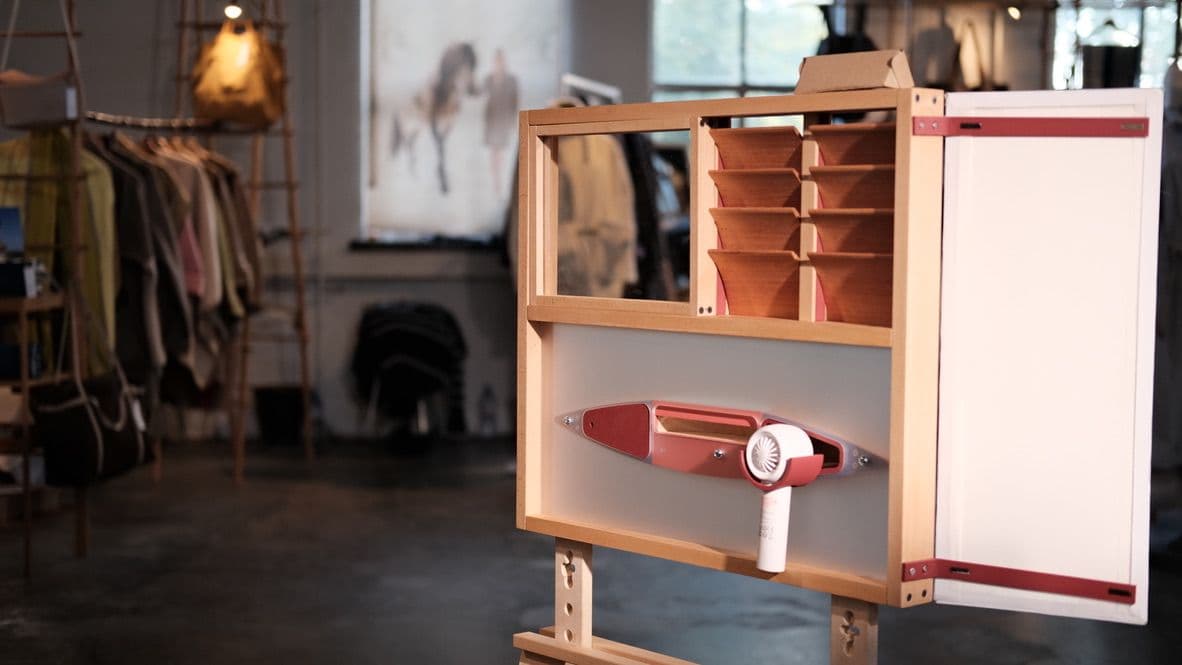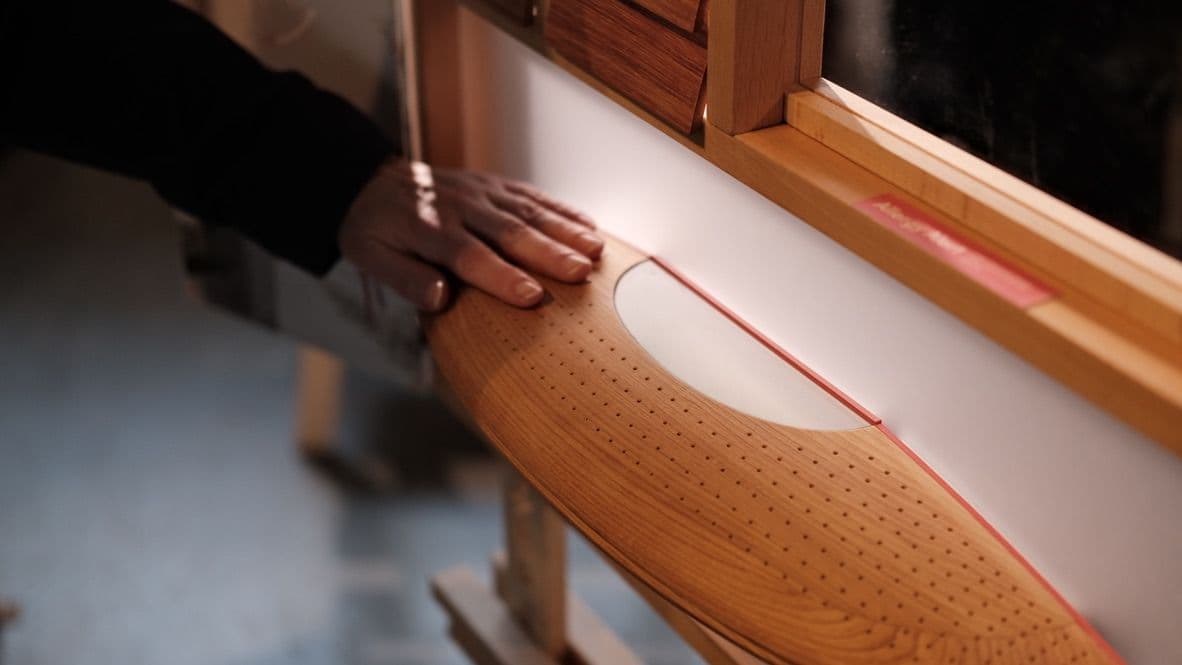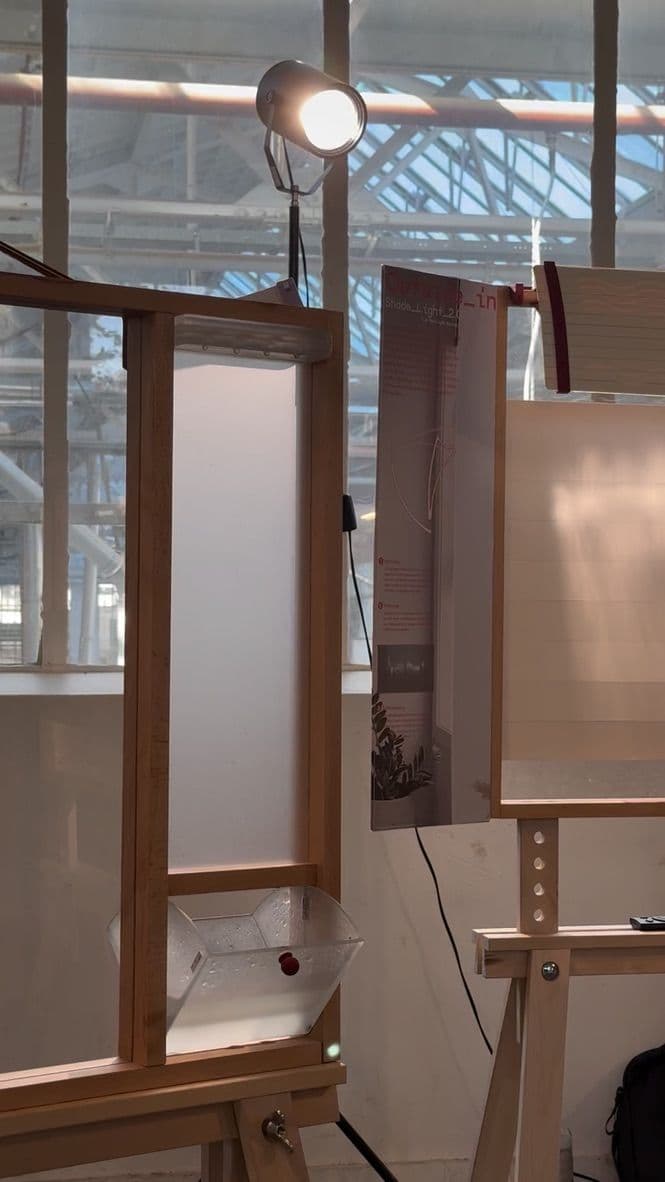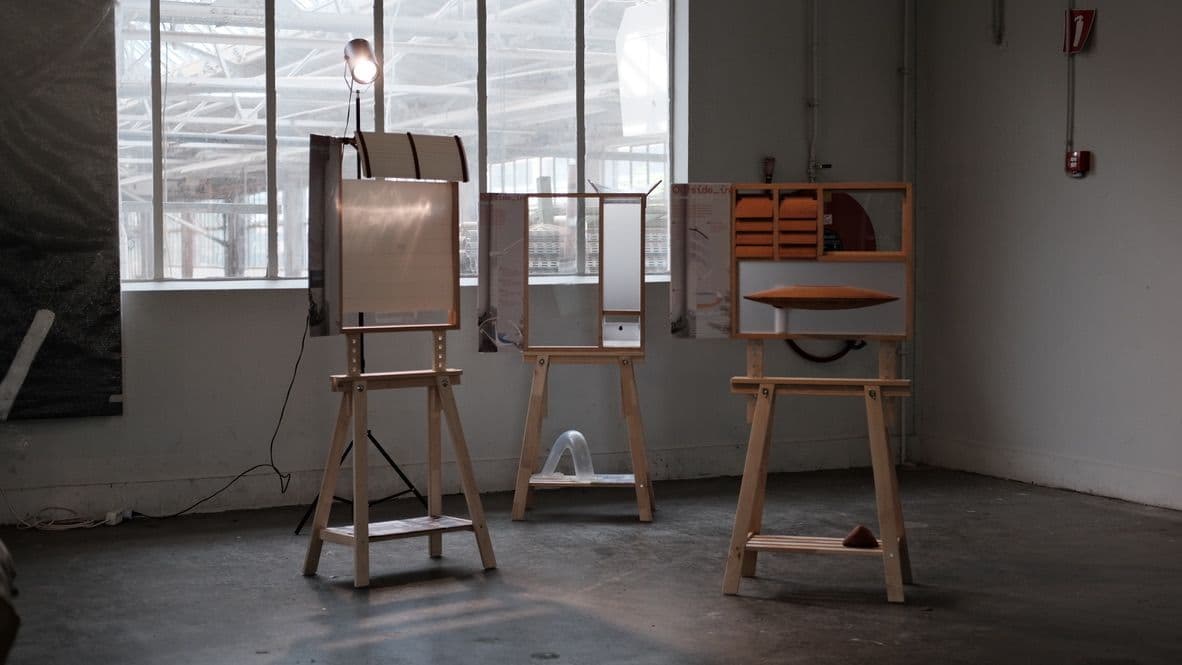Key Points
- Retrofitted window add-ons channel wind, rain, and light indoors, shifting interiors from passive to experiential.
- Material-as-translator: White Cedar reshapes airflow and carries scent; polished aluminium tracks sunlight and transfers heat to a responsive curtain.
- Version 1.5 reduces visual footprint and integrates into the frame; Pond_Rain now collects rain outside and guides it indoors without interruption.
- Embraces seasonality and unpredictability; aims for architectural-level integration, not cosmetic biophilia or simulated nature.
- Direction of travel: multisensory cues (tactile, olfactory, thermal) as core building logic, not décor.
Full interview with Zixuan Zhang
1. The Outside_in project aims to bring natural energies such as wind, rain, and light into indoor spaces. Can you explain how this concept was translated into your design process and how it challenges conventional perceptions of indoor environments?
In a standard living space, our perception of the outside is typically limited to two modes: windows and doors. We either step outside or open a window to sense the weather and the presence of nature. But when protected by an architectural shell, our sensitivity to nature’s rhythms is often dulled. My designs aim to expand and reformat these dimensions of perception, transforming passive interiors into interactive, experiential environments.
2. You mention the importance of rethinking the relationship between interior and exterior spaces. What role does materiality play in connecting these two realms, and how do the materials used enhance this connection?
The connection lies in the degree of attention we pay to the outside while remaining inside. My design goal is to translate natural signals, from abstract sensations to concrete experiences. Materiality is the translator.
Take Tunnel_Wind, for example. Using White Cedar, a fragrant wood with a sand-like texture, air is used as a carrier for scent, reshaping airflow to invite sensory interaction. The internal and external structure of the material is engineered to redistribute air. This creates scenarios where people are encouraged to touch, smell, and feel the atmosphere, not just pass through it.

3. The project is described as being inspired by nature’s unpredictability. How do you balance the inherent unpredictability of natural elements like weather with the need for structural stability and safety in indoor spaces?
Honestly, these designs are still prototypes, not fully integrated architectural solutions. Currently, they function as retrofitted add-ons to existing windows. But to address unpredictability effectively, these concepts need to be embedded at the architectural decision-making level.
Instead of merely adapting windows, we need to reimagine the window itself, structurally and functionally, to respond systemically to nature’s uncertainties. This is just one scenario. Different building types offer new imaginative opportunities for integrating natural forces.

4. One of the key goals of Outside_in is to enhance the relationship with nature in indoor environments. Could you elaborate on the material choices that support this connection, especially in terms of sustainability and environmental impact?
I view material choice as a mirror for natural forces, a way to reflect and engage with them. Design becomes the language of that interaction. Only through proactive, sensory participation can users begin to question their environment and attune themselves to external rhythms.
Take Well_Light. Its reflective surface, a curved, polished aluminum sheet, traces sunlight’s path while absorbing heat. This heat is transferred to a responsive curtain, which subtly reacts over time. Sometimes, the interaction is silent and slow. It demands patience and presence from the observer.

5. How does the Outside_in installation work with the changing seasons and the natural environment? What challenges did you face in designing a space that adapts to varying weather conditions while maintaining a consistent user experience?
Seasonal shifts, and even geographical weather patterns, dramatically influence the design. Outside_in is rooted in the belief that nature cannot be controlled, only respected. Some designs are season-specific, and that’s intentional. The idea is to celebrate unpredictability, not erase it.
6. As the project evolves from Outside_in_1.0 to 2.0, what changes or improvements have you made in the design process, and how have materials played a role in these revisions?
It’s more accurate to call it Outside_in_1.5. The shift has been about scaling down the visual footprint of the installation while amplifying the sensory experience.
For example, Pond_Rain originally had a spiral structure visible from both sides of a window. It was bold but obstructive. It was visually dominant, which ironically diminished the emotional effect of watching rain fall. In the newer version, I collect rain from outside and guide it indoors, where it continues its trajectory uninterrupted.
The goal is to fully integrate the installation into the window frame, reusing or reengineering materials already present.

7. Looking forward, how do you envision the future of architectural design in terms of integrating natural elements into indoor spaces? Do you see projects like Outside_in influencing future trends in architecture and urban design, particularly in terms of sustainability and multisensory experiences?
I’m cautious about the notion of “bringing nature inside.” Simulation or artificial greenery often feels like a compromise, offering a false sense of connection. True nature is fluid, volatile, unpredictable. It can’t be mimicked by fixed interiors.
What we need is not to contain nature, but to extend its presence. Not just visual cues, but tactile, olfactory, thermal cues that evolve over time. That’s where architecture must move, toward facilitating natural continuity, not enclosing it.








